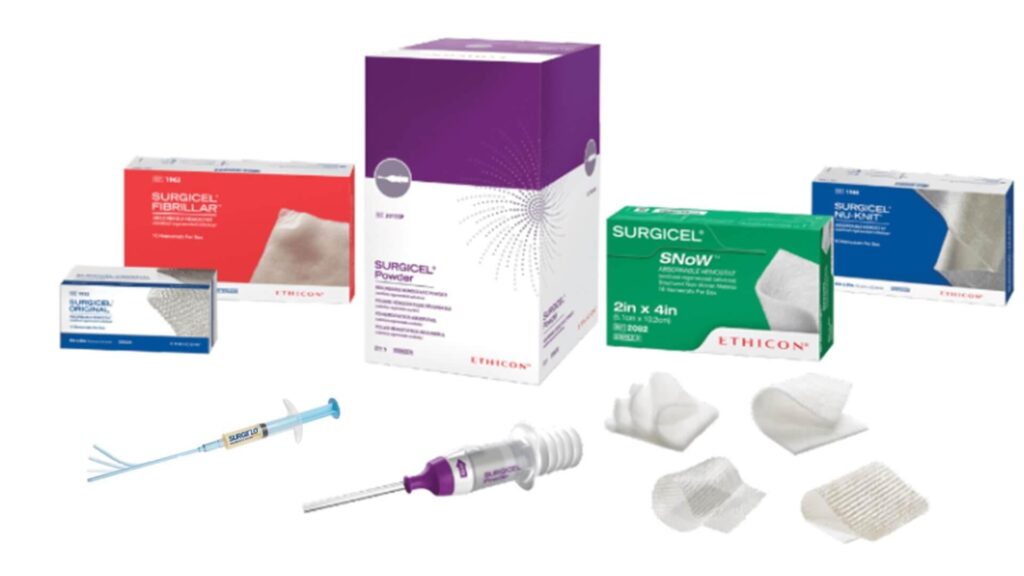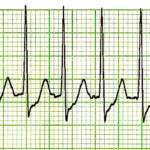Effective hemostasis is critical to the success of surgical procedures, directly influencing patient outcomes and operative efficiency. While conventional methods such as ligation, cautery, and suturing remain foundational, surgical hemostasis adjuncts play a vital role in controlling bleeding—particularly in complex, minimally accessible, or highly vascularized areas.
These adjuncts encompass a range of biologically and synthetically derived materials engineered to promote clot formation, stabilize the surgical field, and reduce transfusion needs.

Classifications of Hemostasis Adjuncts
Surgical hemostasis adjuncts are broadly categorized based on their mechanism of action and composition:
1. Mechanical Hemostats
- Function by providing a physical barrier to bleeding.
- Enhance platelet aggregation and clot scaffold formation.
Common Types:
- Gelatin sponges (e.g., Gelfoam)
- Oxidized regenerated cellulose (e.g., Surgicel)
- Collagen-based agents (e.g., Helistat)
2. Active Hemostats
- Contain biologically active substances such as thrombin.
- Accelerate the clotting cascade by directly converting fibrinogen to fibrin.
Examples:
- Thrombin topical solutions (bovine, human, recombinant)
- Fibrin sealants (e.g., Tisseel, Evicel)
3. Flowable Hemostats
- Combine mechanical and active properties in a malleable format.
- Ideal for irregular or oozing surfaces.
Notable Products:
- Floseal (gelatin matrix + thrombin)
- Surgiflo (gelatin-based with optional thrombin)
4. Sealants and Adhesives
- Primarily used to reinforce hemostasis and tissue adhesion.
- Include fibrin- or polyethylene glycol-based materials.
Applications:
- Liver resection
- Vascular anastomosis
- Dural closure
Mechanism of Action in Hemostatic Agents
Each class of adjunct operates via specific biological or physical mechanisms:
- Mechanical agents provide a matrix that promotes platelet aggregation and supports clot formation.
- Active agents directly participate in the coagulation cascade, enhancing fibrin production.
- Combination agents (flowables) integrate thrombin with matrices for superior adaptability to wound geometry.
- Sealants act as physical barriers, sometimes independent of the host’s clotting ability.
The efficacy of each agent is determined by bleeding severity, anatomic location, and the patient’s coagulation status.
Indications and Surgical Applications
Surgical hemostasis adjuncts are selected based on the type of bleeding and the surgical field:
1. Mild to Moderate Capillary Bleeding
- Oxidized cellulose or gelatin sponges
- Preferred in laparoscopic or superficial procedures
2. Moderate to Severe Bleeding
- Thrombin-based active agents
- Fibrin sealants for diffuse bleeding or coagulopathic patients
3. Oozing in Confined or Irregular Surfaces
- Flowable hemostats for neurosurgical, spinal, or ENT procedures
4. Tissue Sealing and Reinforcement
- PEG-based sealants in vascular, gastrointestinal, and hepatic resections
Comparative Effectiveness and Clinical Considerations
| Adjunct Type | Advantages | Limitations |
|---|---|---|
| Mechanical Hemostats | Easy to use, cost-effective | Less effective in coagulopathy |
| Active Hemostats | Effective in impaired clotting states | Risk of immune reaction (bovine thrombin) |
| Flowable Hemostats | Conform to irregular anatomy | Higher cost, requires reconstitution |
| Sealants & Adhesives | Enhance closure, reduce leak risk | Can be complex to apply |
Clinical decision-making should balance cost, ease of use, compatibility with minimally invasive techniques, and patient-specific risk factors.
Safety Profile and Regulatory Considerations
All surgical hemostasis adjuncts must comply with FDA or CE regulatory standards, ensuring sterility, biocompatibility, and efficacy. However, surgeons must be aware of:
- Immunogenic reactions in agents derived from bovine or human proteins
- Infection risk if not fully absorbed
- Granuloma formation with cellulose-based agents
- Interference with imaging (e.g., radiopacity masking pathology)
Surgeons are advised to document adjunct use in operative reports and monitor for post-operative complications such as seroma or foreign body response.
Emerging Innovations in Hemostasis Adjuncts
Advancements in biomaterials and regenerative medicine are driving next-generation hemostatic technologies:
1. Synthetic Peptide Sealants
- Mimic fibrin’s polymerization behavior
- Provide precise, rapid adhesion with low immunogenicity
2. Nanofiber Hemostats
- Engineered to maximize surface interaction with platelets
- Support tissue regeneration alongside hemostasis
3. Sprayable Hemostatics
- Enable uniform application across large or inaccessible areas
- Used in trauma surgery and liver resection
4. Smart Hemostats
- Respond to bleeding intensity or pH changes
- Under development for adaptive clot formation
Training, Handling, and Storage
Proper application techniques significantly influence the efficacy of surgical hemostasis adjuncts:
- Training modules and videos are available for surgeons and staff
- Sterile field maintenance is critical; avoid overhandling or contamination
- Storage conditions vary—some require refrigeration or reconstitution before use
Institutions must also incorporate adjuncts into their bleeding management protocols, ensuring timely availability during critical procedures.
Surgical hemostasis adjuncts are indispensable in contemporary surgical practice. Their strategic application reduces intraoperative blood loss, shortens operating time, and improves patient outcomes across diverse specialties. As technologies evolve, future adjuncts promise enhanced effectiveness, biodegradability, and integration with regenerative healing—all pivotal for precision surgery.

